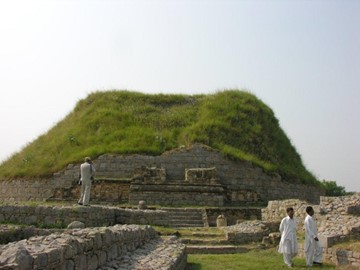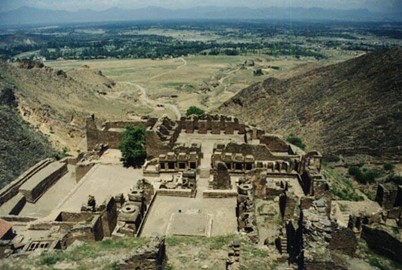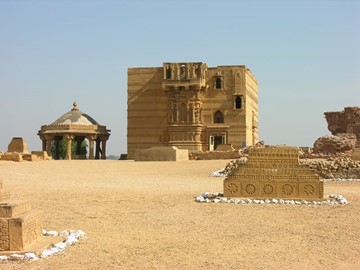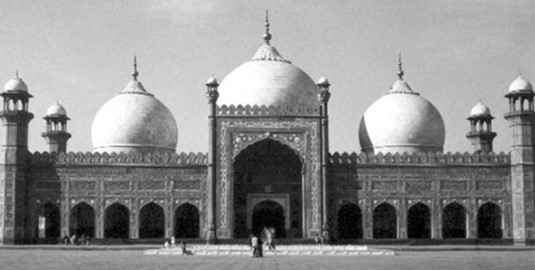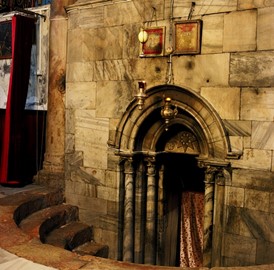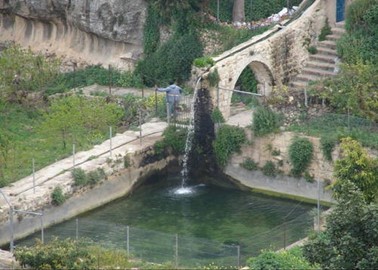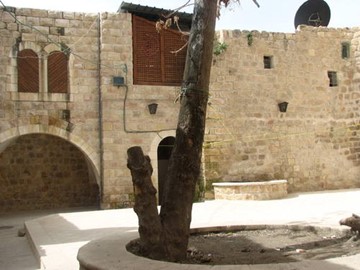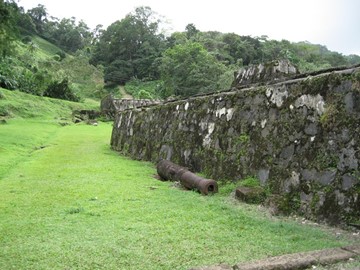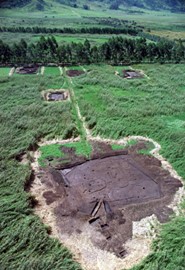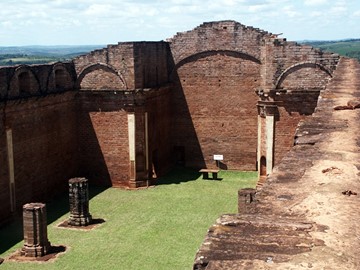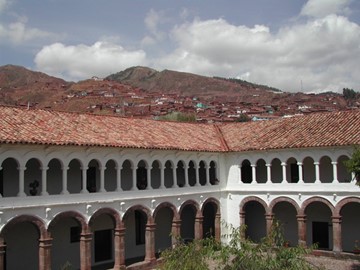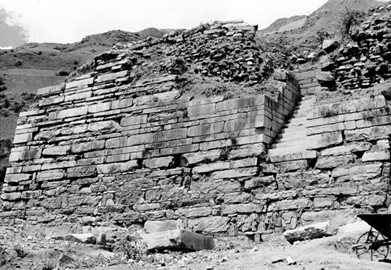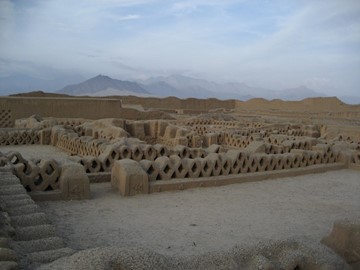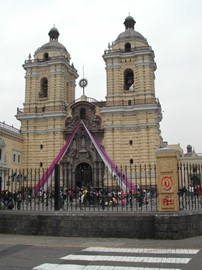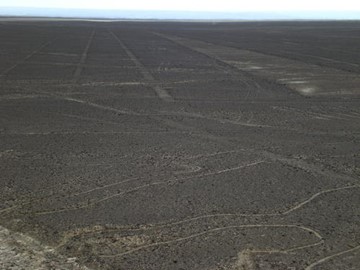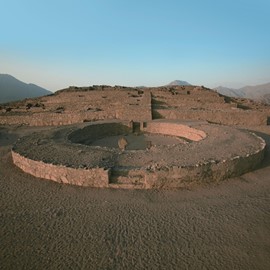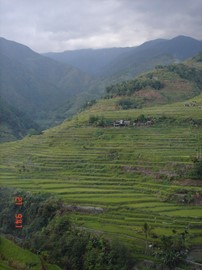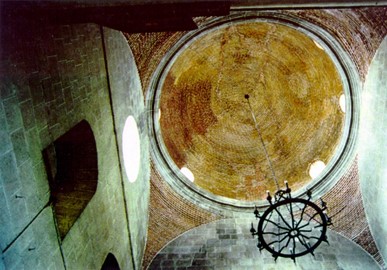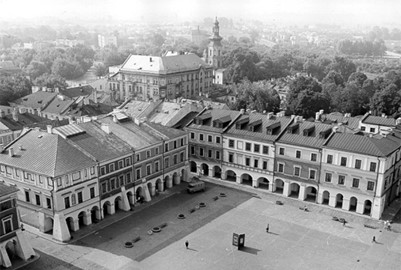category :: cultural
Taxila
Taxila, a UNESCO World Heritage site in Pakistan, is an ancient city renowned for its historical and cultural significance. Dating back to the 6th century BCE, it served as a major center of learning and trade, influenced by Persian, Greek, and Buddhist civilizations. The site features a wealth of archaeological remains, including stupas, monasteries, and urban settlements, reflecting its role as a crossroads of ancient cultures. Today, Taxila stands as a testament to the region’s rich past, offering valuab... Read More
Takht i Bahi and Sahr i Bahlol
Takht-i-Bahi and Sahr-i-Bahlol, a UNESCO World Heritage site in Pakistan, represent a well-preserved Buddhist monastic complex from the 1st to 7th centuries CE. Takht-i-Bahi features a hilltop monastery with intricately designed stupas, meditation cells, and assembly halls, showcasing ancient Buddhist architecture and urban planning. Nearby, Sahr-i-Bahlol contains archaeological remains of a thriving settlement linked to the monastery, offering insights into the region’s historical and religious significanc... Read More
Makli, Thatta
Makli, Thatta, a UNESCO World Heritage site in Pakistan, is one of the largest necropolises in the world, showcasing an extraordinary collection of funerary architecture spanning from the 14th to 18th centuries. This historic cemetery features intricately carved tombs, mausoleums, and monuments, reflecting the rich cultural and artistic heritage of the Samma, Arghun, Tarkhan, and Mughal dynasties. The site stands as a testament to the region's historical significance and architectural prowess, drawing schol... Read More
Fort and Shalamar Gardens
The Fort and Shalamar Gardens in Lahore, a UNESCO World Heritage site in Pakistan, represent a stunning blend of Mughal architecture and landscaped beauty. The Fort, a sprawling citadel, showcases intricate palaces, halls, and mosques adorned with detailed tile work and marble, reflecting the grandeur of the Mughal Empire. Adjacent to it, the Shalamar Gardens, designed in the Persian charbagh style, feature terraced lawns, fountains, and pavilions that once served as a royal retreat. Together, they stand as... Read More
Rohtas Fort
Rohtas Fort, a UNESCO World Heritage site in Pakistan, is a remarkable 16th-century fortress built by Sher Shah Suri to defend against Mughal incursions. This sprawling military complex showcases a blend of Afghan and Indian architectural styles, featuring massive walls, imposing gates, and strategic bastions designed for defense. Its historical significance lies in its role as a symbol of power and resilience, reflecting the engineering prowess of its time. Today, it stands as a well-preserved testament to... Read More
Bethlehem
Bethlehem, a UNESCO World Heritage site in Israel, is renowned as the birthplace of Jesus Christ, making it a significant religious and historical landmark. The city is home to the Church of the Nativity, a 4th-century basilica built over the traditional site of Jesus’ birth, which attracts pilgrims and tourists worldwide. Its well-preserved ancient architecture, including monasteries and bell towers, reflects its rich cultural heritage. Bethlehem’s historical importance and sacred sites have cemented its s... Read More
Battir
Battir, a UNESCO World Heritage site in Israel, is a village renowned for its ancient agricultural terraces and Roman-era irrigation system. Located southwest of Jerusalem, it features a stunning landscape of stone terraces, olive groves, and vineyards, sustained by a traditional water distribution network still maintained by local families. Inscribed in 2014, Battir exemplifies thousands of years of human ingenuity and cultural heritage, earning its status as a globally significant site.
Hebron
Hebron, a World Heritage site in Israel, is an ancient city located in the Judean Hills, renowned for its historical and cultural significance. It is home to the Cave of the Patriarchs, a revered burial site traditionally associated with biblical figures such as Abraham, Isaac, and Jacob, making it a key location in Jewish and Christian heritage. The city's old town features well-preserved architecture, including stone houses and narrow streets, reflecting its long history dating back over 3,000 years. Hebr... Read More
Portobelo and San Lorenzo
Portobelo and San Lorenzo, a UNESCO World Heritage site in Panama, are historic colonial fortifications built by the Spanish in the 16th and 17th centuries along the Caribbean coast. These well-preserved sites, including the forts of San Lorenzo and various structures in Portobelo, were strategically designed to protect transatlantic trade routes and defend against pirate attacks. The area showcases a blend of military architecture and natural beauty, with stone walls, cannons, and scenic coastal views. Rec... Read More
Kuk Early
The Kuk Early Agricultural Site, a UNESCO World Heritage site in Papua New Guinea, spans 116 hectares of swamps in the western highlands, situated 1,500 meters above sea level. Archaeological evidence reveals it as one of the world’s earliest examples of independent agricultural development, with wetland reclamation and cultivation practices dating back 7,000 to possibly 10,000 years. The site showcases a significant technological shift from plant exploitation to organized agriculture around 6,500 years ago... Read More
Jesuit Missions of Paraná and Tavarangue
The Jesuit Missions of La Santísima Trinidad de Paraná and Jesús de Tavarangue, located in Paraguay, are a UNESCO World Heritage site recognized in 1993 for their historical and cultural significance. These 17th- and 18th-century missions, founded by Jesuit missionaries, blended European Baroque architecture with indigenous Guaraní craftsmanship, creating a unique cultural fusion. The well-preserved ruins, including grand churches and communal spaces, reflect the Jesuits’ efforts to integrate and educate th... Read More
Cuzco
Cuzco, a UNESCO World Heritage site in Peru, is a historic city nestled in the Andes Mountains at an elevation of about 3,400 meters (11,150 feet). Once the capital of the Inca Empire, it showcases a remarkable blend of pre-Columbian and colonial architecture, including the iconic Qorikancha temple and the grand Plaza de Armas. Its well-preserved ruins, vibrant culture, and role as a gateway to Machu Picchu make it a global treasure. Today, Cuzco thrives as a center of indigenous heritage and tourism.
Chavin
Chavín de Huántar, a UNESCO World Heritage site in Peru, is an ancient archaeological site dating back to around 1200 BCE. Located in the Andean highlands, it served as a major ceremonial and cultural center for the Chavín civilization, known for its distinctive art and architecture. The site features a complex of stone structures, including the U-shaped Old Temple and the larger New Temple, adorned with intricate carvings of felines, birds, and anthropomorphic figures. Its significance lies in its role as ... Read More
Chan Chan
Chan Chan, located in Peru, is a UNESCO World Heritage site recognized as the largest pre-Columbian adobe city in the Americas. Built by the Chimú civilization around 850 AD, it served as their capital until the Inca conquest in the late 15th century. The sprawling archaeological site features intricate mud-brick structures, including palaces, temples, and plazas, showcasing advanced urban planning and engineering. Today, it stands as a testament to the Chimú's cultural and architectural achievements, despi... Read More
Lima
The Historic Centre of Lima, a UNESCO World Heritage site in Peru, showcases a remarkable blend of colonial architecture and urban planning from the 16th century. Founded by Spanish conquistador Francisco Pizarro, it served as the political and administrative heart of Spain’s South American empire, featuring landmarks like the grand Plaza Mayor, the ornate Archbishop’s Palace, and the Basilica Cathedral. The site preserves a rich history of European influence, with its grid layout and baroque-style building... Read More
Nasca and Palpa
The Lines and Geoglyphs of Nasca and Palpa, a UNESCO World Heritage site in Peru, are a remarkable collection of ancient earthworks created by the Nasca culture between 500 BCE and 500 CE. These massive designs, etched into the desert floor, include straight lines, geometric shapes, and detailed figures of animals and plants, visible primarily from the air. Scholars believe they served ceremonial or astronomical purposes, reflecting the Nasca people's sophisticated understanding of their environment and cos... Read More
Arequipa
The Historic Centre of Arequipa, a UNESCO World Heritage site in Peru, is renowned for its well-preserved colonial architecture, blending European and indigenous influences. Constructed primarily from white volcanic sillar stone, the city's buildings showcase ornate facades, arches, and courtyards, reflecting its rich history as a key Spanish settlement in the 16th century. Notable landmarks include the grand Basilica Cathedral and the Santa Catalina Monastery, a sprawling complex of colorful cloisters and ... Read More
Caral Supe
Caral-Supe, a World Heritage site in Peru, is recognized as one of the oldest civilizations in the Americas, dating back to around 2600 BCE. This archaeological site features monumental architecture, including pyramids, plazas, and residential complexes, showcasing advanced urban planning and social organization. Its significance lies in its well-preserved state, offering insights into early Andean culture, agriculture, and trade practices. Caral-Supe stands as a testament to the ingenuity of its ancient in... Read More
Vigan
Vigan, a UNESCO World Heritage site in the Philippines, is a remarkably well-preserved example of a Spanish colonial town, showcasing a unique blend of Asian and European architectural influences. Established in the 16th century, its cobblestone streets, historic houses, and grand cathedral reflect a rich cultural heritage shaped by trade and colonization. The city’s urban planning and traditional structures, largely intact, offer a glimpse into its past as a key trading hub. Today, Vigan stands as a living... Read More
Rice Terraces of the Philippines
The Rice Terraces of the Philippine Cordilleras, a UNESCO World Heritage site, are an architectural marvel created by the Ifugao people over 2,000 years ago. These hand-carved terraces, built into steep mountainsides, demonstrate remarkable engineering skill and sustainable farming practices, utilizing an intricate irrigation system that harnesses water from the forests above. Often called the 'Eighth Wonder of the World,' they reflect a harmonious blend of human ingenuity and natural landscape, preserved t... Read More
Baroque Churches
The Baroque Churches of the Philippines, recognized as a UNESCO World Heritage site, exemplify a unique fusion of European Baroque architecture and local Filipino craftsmanship. Constructed between the 16th and 18th centuries during Spanish colonial rule, these churches feature robust stone structures designed to withstand earthquakes, adorned with intricate carvings and ornate interiors. They stand as significant cultural and historical landmarks, reflecting the spread of Christianity and the architectural... Read More
Auschwitz Birkenau
Auschwitz-Birkenau, a UNESCO World Heritage site in Poland, served as a Nazi concentration and extermination camp during World War II, where over 1.1 million people, primarily Jews, were systematically murdered between 1940 and 1945. Established by the Germans, it became a central symbol of the Holocaust, featuring gas chambers, crematoria, and barracks that stand as a somber testament to the atrocities committed. Today, it functions as a memorial and museum, preserving the history of the victims and educat... Read More
Zamosc
The Old City of Zamość, a UNESCO World Heritage site in Poland, is a remarkably well-preserved example of a Renaissance planned town. Founded in 1580 by Chancellor Jan Zamoyski and designed by Italian architect Bernardo Morando, it features a harmonious layout with a central market square, elegant townhouses, and fortified walls reflecting its historical role as a trading and defensive hub. Its unique blend of Polish and Italian architectural styles, including the striking Zamość Cathedral and the grand Zam... Read More
Torun
The Medieval Town of Toruń, a UNESCO World Heritage site in Poland, is renowned for its exceptionally well-preserved historic architecture. This charming town showcases an impressive collection of Gothic buildings, including brick churches, townhouses, and the iconic Toruń Cathedral, reflecting its prosperity as a major trading center during the Middle Ages. Its unique urban layout, largely unchanged since the 13th century, offers a glimpse into medieval European life, with landmarks like the Copernicus Hou... Read More
Malbork Castle
Malbork Castle, a UNESCO World Heritage site in Poland, is a striking example of medieval architecture and one of the largest brick castles in the world. Constructed in the 13th century by the Teutonic Knights, it served as their headquarters and a symbol of their power. The castle features impressive Gothic design, including fortified walls, towers, and a vast courtyard, reflecting its historical role as both a military stronghold and administrative center. Today, it stands as a well-preserved monument, of... Read More
